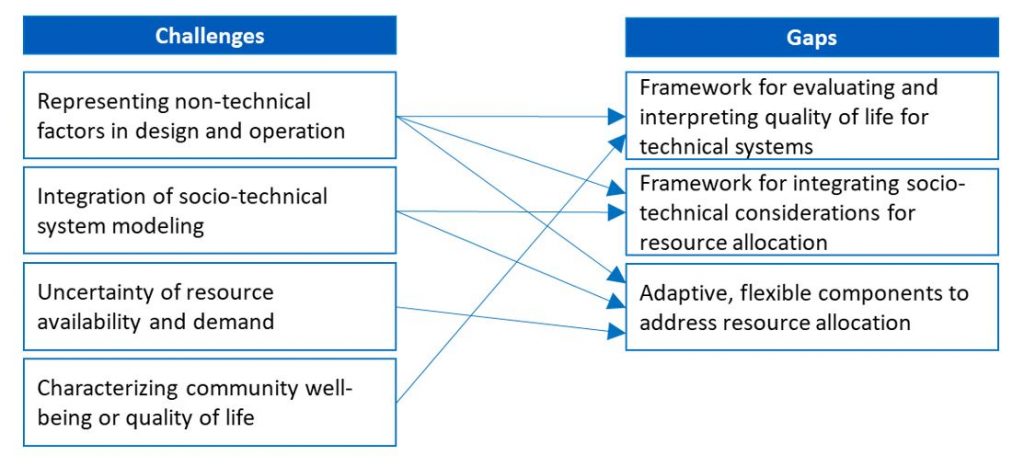Solar microgrids can provide energy in remote villages throughout the world. These systems support rural development in locations that do not have a centralized grid. This is important since electricity improves living conditions and the overall quality of life. With rural development comes an intrinsic increase in energy demand due to societal and economic changes that occur. The reliance on renewable resources, such as sunlight, further restricts the supply [12]. Eventually, the increasing energy demands of rural development begin to outpace the fixed capacity of the installed microgrid. The lack of wherewithal in these communities provides little if any opportunity to expand the capacity of the system. Rural microgrids have a battery bank to store excess energy for use when the resource is not available. Given the absence of power management, the stored supply can be depleted. This leaves no energy for important needs, such as security lighting or pumping water. Eventually, the disruptive nature of the power can undo the very social progress that the microgrid enabled.
Through my research activities in [3, 13-15] I am finding solutions in smart microgrids. Smart grids include sensors and hardware that can control the distribution of limited power. My solution manages this limited power given uncertainties that exist in renewable resources and user demand. To achieve this goal, I have approached the microgrid and its surroundings as a cyber-physical social system. A transformative feature of this work is that the power decisions are made based on the rural Quality of Life (QOL). This work demonstrates how the QOL can be actualized through parameters for water, safety, education, and leisure/social activities. Here, each parameter is evaluated based on three metrics, which are the current condition, community importance, and energy dependence. A solution for power allocation is developed by executing the compromise Decision Support Problem (cDSP) and exploring the solution space [16, 17]. Energy loads, such as those required for powering water pumps, streetlamps, and household devices are prioritized in the context of the QOL.

Challenges and gaps in the establishment of the socio-technical relationship
3. Suk, H., et al., Socio-Technical Modeling to Manage Power Distribution for Microgrid Systems With Limited Production Capacity. Journal of Solar Energy Engineering, 2021. 144(1): p. 011010.
12. Sajed Sadati, S., et al., Sizing of photovoltaic-wind-battery hybrid system for a Mediterranean island community based on estimated and measured meteorological data. Journal of Solar Energy Engineering, 2018. 140(1): p. 011006.
13. Suk, H., et al. A Framework for Improving Rural Microgrid Sustainability Through Integrated Socio-technical Considerations. 2021. Singapore: Springer Singapore.
14. Suk, H., et al. Microgrid Power Management With Integrated Quality of Life Considerations. in ASME 2020 International Design Engineering Technical Conferences and Computers and Information in Engineering Conference. 2020.
15. Amaria, A.P., et al. Optimization Model for Owner-Based Microgrids Using LSTM Predicted Demand for Rural Development. in ASME 2019 International Design Engineering Technical Conferences and Computers and Information in Engineering Conference. 2019.
16. Karkaria, V., et al. A Computational Framework for Social Entrepreneurs to Determine Policies for Sustainable Development. in ASME 2021 International Design Engineering Technical Conferences and Computers and Information in Engineering Conference. 2021.
17. Bras, B. and F. Mistree, Robust design using compromise decision support problems. Engineering Optimization, 1993. 21(3): p. 213-239.
